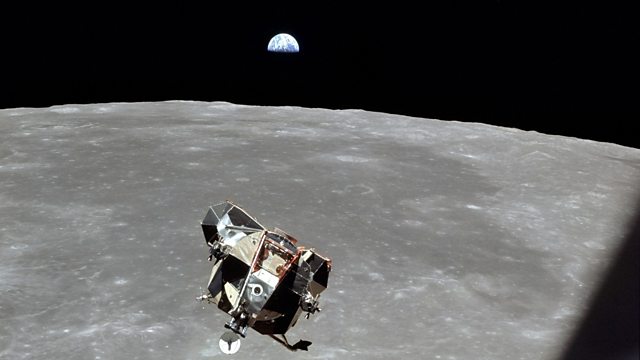
Melting glaciers, warming coffee and a Dragonfly on Titan
Earth’s 200k melting glaciers account for a fifth of sea level rise already. How a long lost species of coffee might cope with climate change, and flying a chopper on Titan.
When Apollo 11 astronaut Michael Collins – who passed away this week – looked down on the earth from lunar orbit during those days in 1969, he saw more ice and a smaller liquid ocean than you would see today. Of the 200,000 glaciers outside of the polar and Greenland ice sheets, their melting in the last two decades accounts for about a fifth of the sea level rise we are also seeing. Thus according to a paper published this week in the journal nature by, amongst others Bob McNabb of Ulster University who describes to Roland how and why these numbers are more certain than others before. As fellow earth observation expert Anna Hogg adds, the work synthesises years of data from almost half a million images of glaciers taken from space, and provides our best handle yet on our accelerating loss of this finite and dwindling natural feature.
Researchers at Kew in the UK and in Sierra Leone have re-discovered a species of coffee plant once thought lost. As Marnie Chesterton reports, climate change threatens many coffee crops around the world as the most popular variety – arabica – needs cool high altitude conditions which are going to become more scarce. But after a long and arduous search, the researchers have discovered a more resilient variety that might not only save the morning brew for many, it may even prove agriculturally and even economically transformative for some African economies.
And whilst many of us watch the antics of NASA’s Martian helicopter, Ingenuity, as it whizzes across the distant plains of “Wright’s Field” aerodrome on Mars, some are watching with more trepidation than others. In 6 years’ time, Zibi Turtle, Principle Investigator of NASA’s Dragonfly mission, hopes to launch a much larger octocopter drone to Titan, moon of Saturn. As she describes to Roland, the challenges are huge, not least because dragonfly will carry all its instruments on board as it hops around, finding new landing sites autonomously. And communicating with Earth will take a whopping hour each way.
When eating a blackberry one day, CrowdScience listener Charles got a tiny seed stuck in his teeth. That got him wondering: why are seeds the size they are? Why does a blackberry have dozens of tiny pips, while a peach has one huge stone right in the middle?
Plant seeds have been around for hundreds of millions of years, so they’ve had plenty of time to shapeshift into wildly different forms: from dust-like orchid seeds to giant coconuts. This evolution has been a long and intricate dance with wind, water and animals; we ask how different kinds of seeds might respond to today’s environmental threats and rapidly changing ecosystems.
And we go in search of the world’s biggest seed, the coco de mer: native to just two remote islands in the Indian Ocean and weighing up to 18kg, how did this seed evolve to be so much bigger than any other?
(Image: The lunar module , carrying Neil Armstrong and Buzz Aldrin, ascends back up to the command module with Michael Collins. It is often said that Michael Collins is the only human, living or dead, who is not in this photograph.
Credit: Michael Collins / NASA)
Last on
More episodes
Broadcasts
- Sat 1 May 2021 23:06GMT����ý World Service South Asia & East Asia only
- Sun 2 May 2021 00:06GMT����ý World Service except East Asia & South Asia
Podcast
-
![]()
Unexpected Elements
The news you know, the science you don't

